As we all know, “the theater begins with a coat rack,” and the hallway is the hallmark of any apartment. Small area of the room, lack of natural light sources in the form of windows, as well as the desire of the owners from the doorstep "Set the tone" for the interior design of the entire dwelling, imposes a great deal of responsibility on them when decorating this part at home. The primary importance in creating a cozy and comfortable atmosphere in the corridors and hallways will have to be given to sources of artificial light - ceiling and wall.
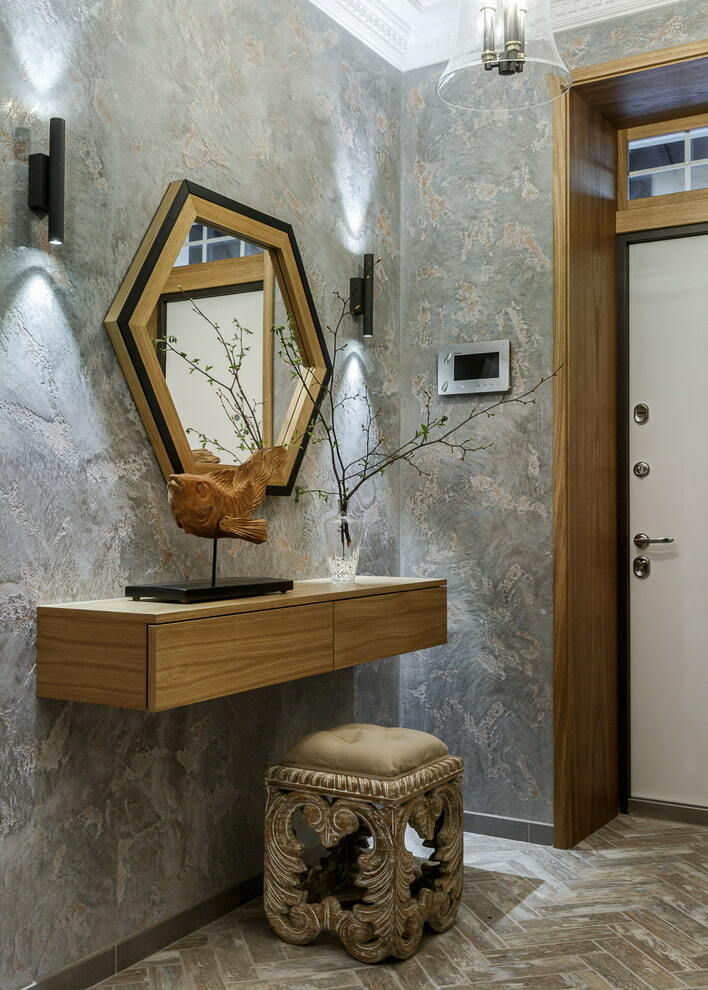
Well-chosen lamps emphasize the peculiarities of the style solution of the interior of the hallway
This article will focus on wall lamps as the main tool for general lighting for competent zoning of the front part of the home.
Features of wall lamps in the corridor and hallway
Content
- Features of wall lamps in the corridor and hallway
- Types of wall lamps
- Lamps with shade
- Sconce
- With hanging shade
- Installation options for wall lights
- Choosing a lamp for the style of the room
- Video: Options for organizing lighting in the hallway
- Photos of examples of the interior of the hallway and corridor with a wall lamp
The use of lamps in the hallway on the wall is not accidental, because this part of the house is the darkest. Often, it is quite narrow and long and may have an additional branch from the hallway in the form of one or more corridors. Wall lamps in the corridor and hallway practically do not take up additional space, being placed along the walls, and easily fit any style of modern design.
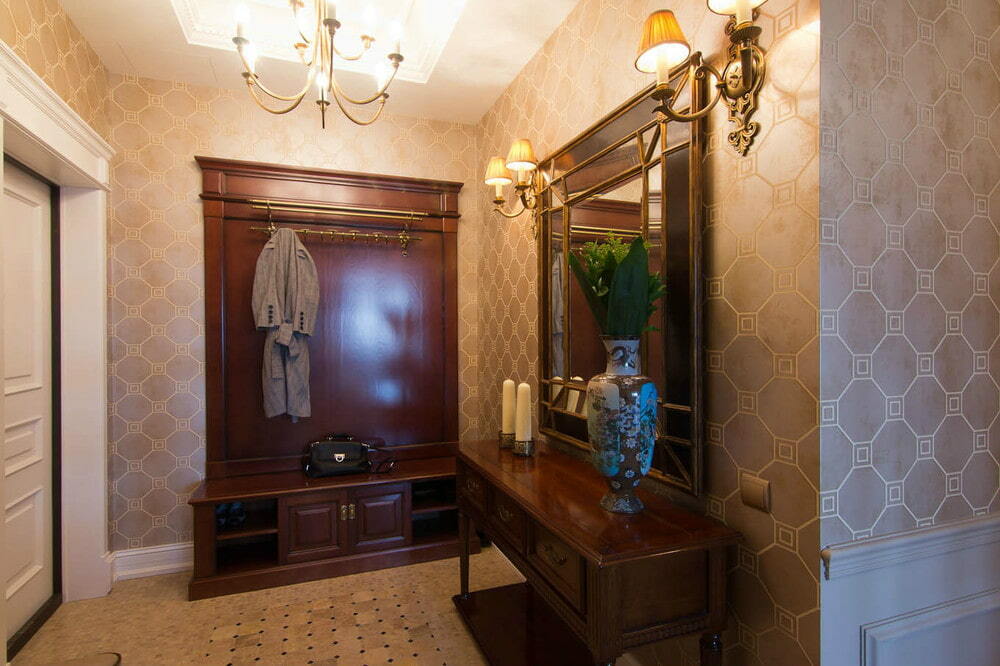
Wall luminaires can complement ceiling lighting, providing illumination of any functional area
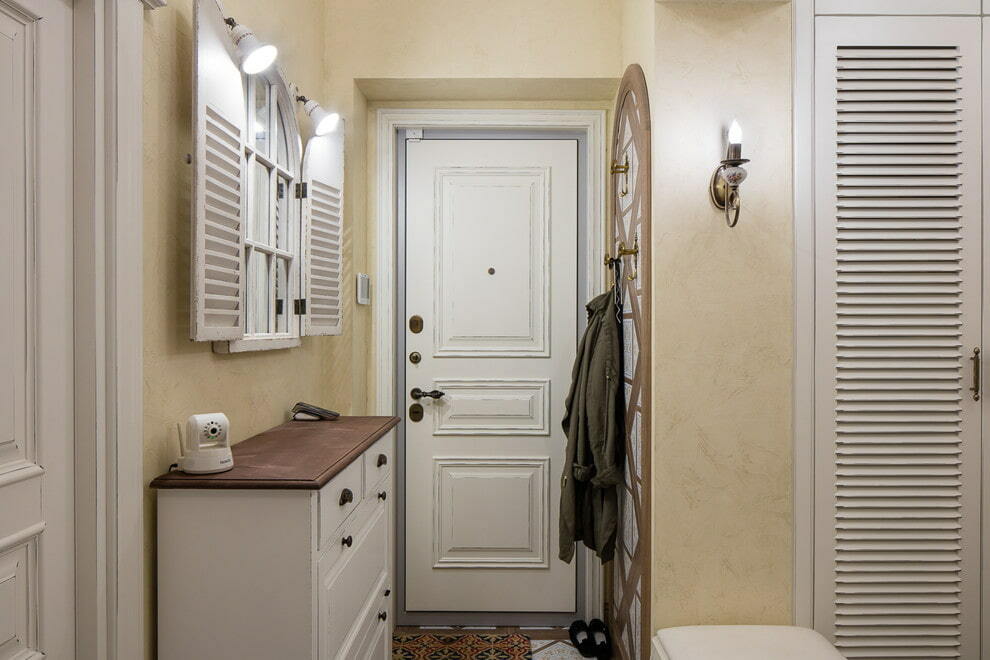
In a hallway with a low ceiling, wall lamps often act as the main lighting.
Consider the features of using wall lamps as sources of artificial lighting in the hallway:
- The transition for the human eye from a hallway with artificial lighting to a room with daylight, natural lighting should be as soft and balanced in terms of brightness as possible, not to “cut the eyes”. This can be achieved by using a lamp or sconce in the hallway, the flow of light from which goes up to the ceiling and diffuses, reflecting down from it with a soft glow.
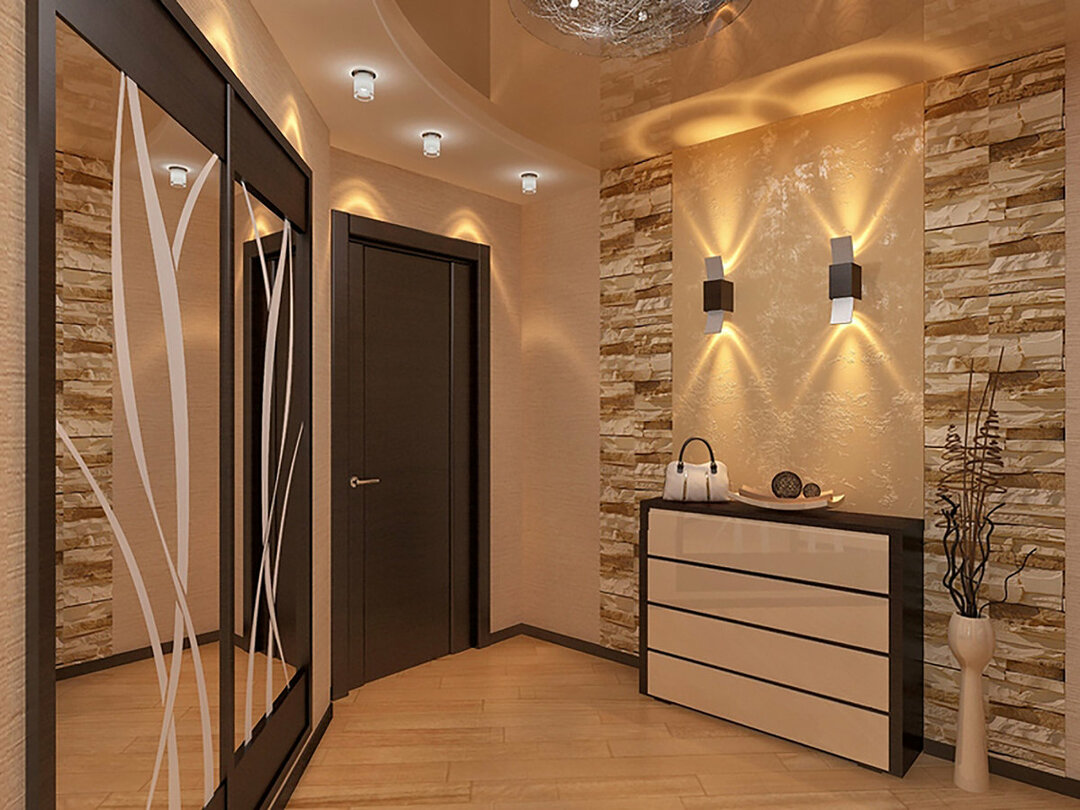
It is important to arrange lighting that is most pleasing to the human eye.
- The modern interior design of the hallway involves the use of wall sconces and lamps for visual delimitation in space and highlighting a specific area. In particular, traditionally, locally, with the help of light sources, the zones at the front door, at the wardrobe or hanger, at the mirror are highlighted more clearly.
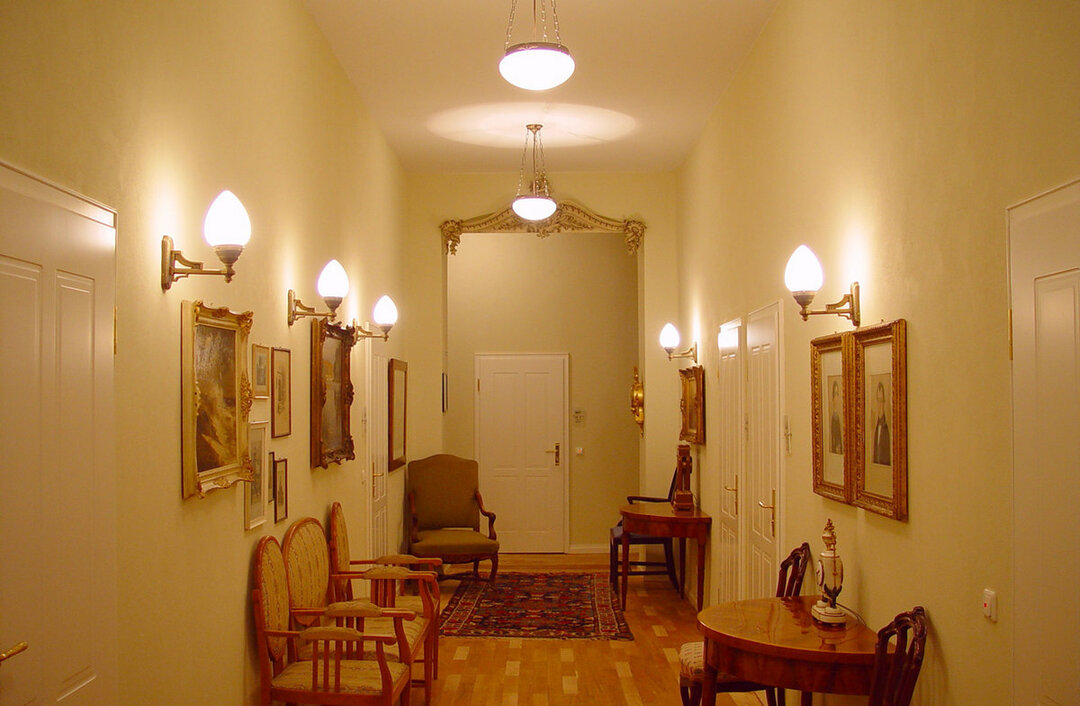
Wall lights do an excellent job of being space dividers
Note! Also, if there are additional decorative elements in the hallway, such as paintings hung in a row, or vases and figurines placed in special niches, the light of spotlights, wall lamps is directed directly to these objects and the feeling of being in museum.
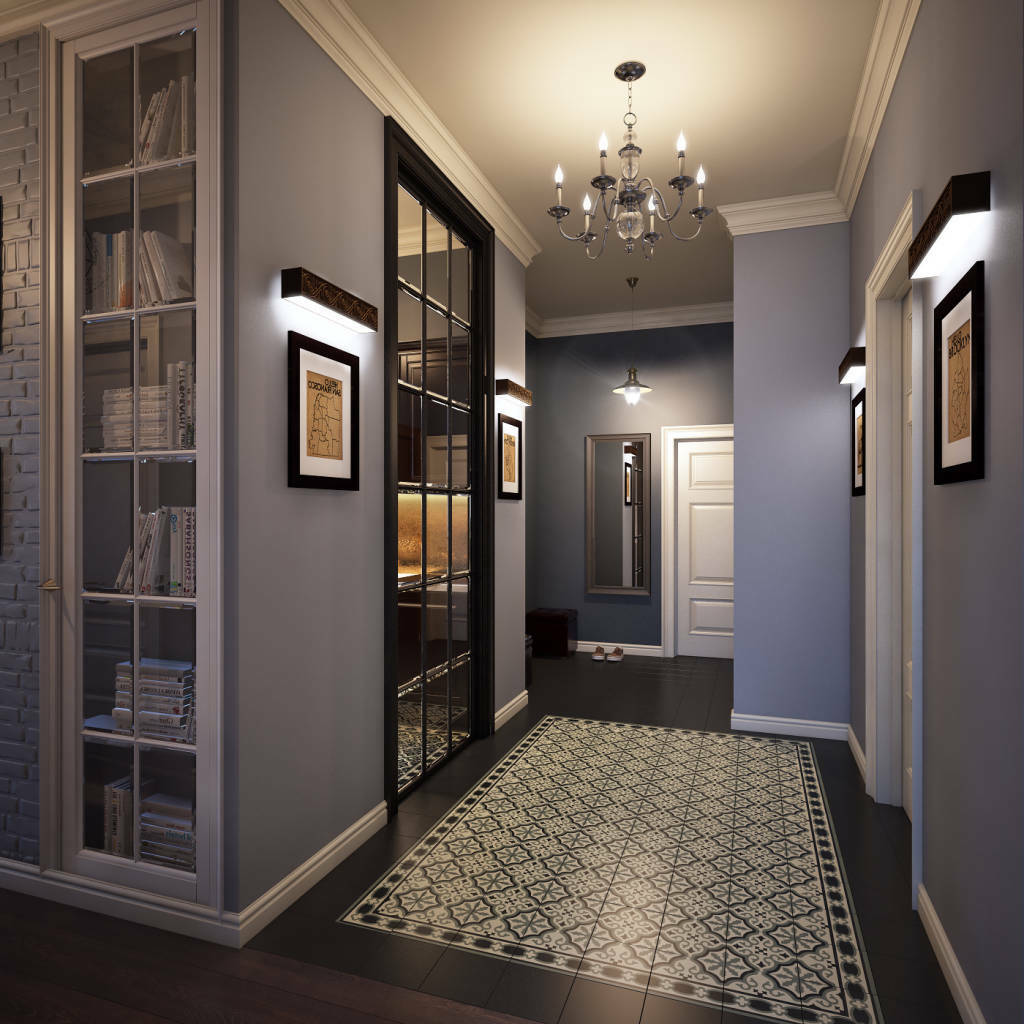
In the photo, an example of the illumination of paintings with overhead lamps
- A design technique in the design of a narrow and long corridor is the placement of small sconces or spotlights along one or both walls. The expediency of this arrangement of light sources is explained by the fact that being on an equal distance from each other, the lamps visually expand the space and the corridor seems more wide.
- Traditionally, the recommended installation level for hallway and corridor wall lights is about two meters above floor level. This is considered to be the optimum suspension height for the sconce. At the same time, do not forget that the wall lamp in the hallway should be located no more than one meter high below the ceiling level. Based on the height of your room, it is worth calculating the final height at which the sconces will be located in the hallway on the wall.
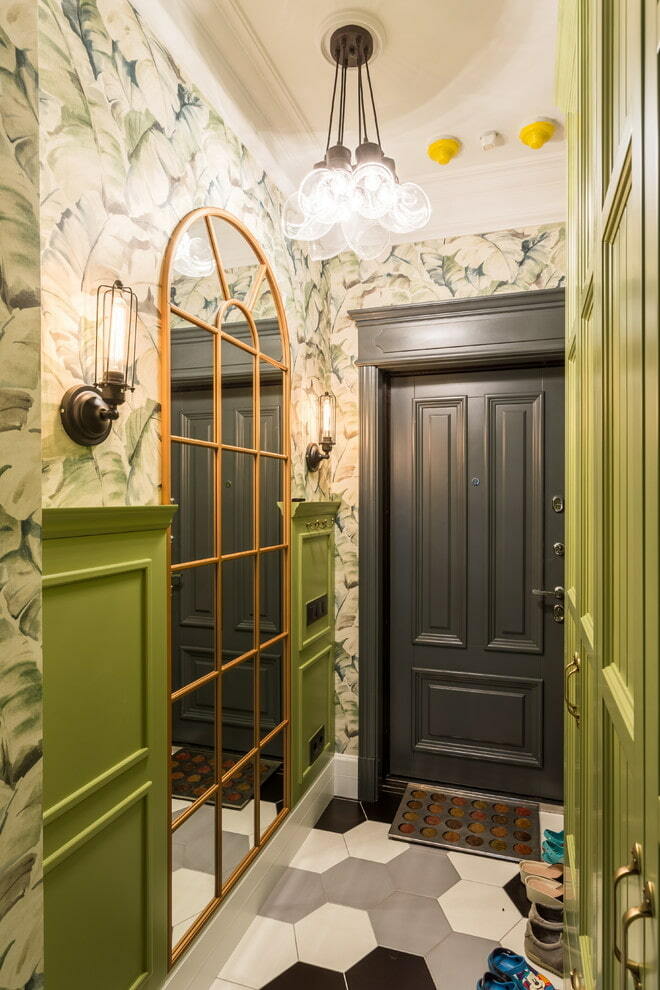
In a small room, a pair of lamps suspended at a height of about 2 meters will suffice
An additional technique that expands the space of ceilings and walls is to install lamps in such a way that the rays from under the lampshade shine both up and down at the same time.
- If necessary, in a small corridor with a hallway, you can abandon the central source of lighting - a ceiling chandelier. If in other rooms of the house wall lamps in the room will be an additional source light to the main, then in the hallway they can independently act as such a center of common lighting.
- The choice of lamps in luminaires should be approached with full responsibility. The dim light of the lamps will deprive the room of a sense of comfort, will "press on the eyes" and will not allow you to illuminate your own reflection in the mirror with sufficient accuracy. And overly powerful bulbs in the smallest detail will reveal all the irregularities and roughness of the walls and flaws in the repair. The best option seems to be the use of energy-saving models with a sufficiently high brightness with a minimum of energy consumption.
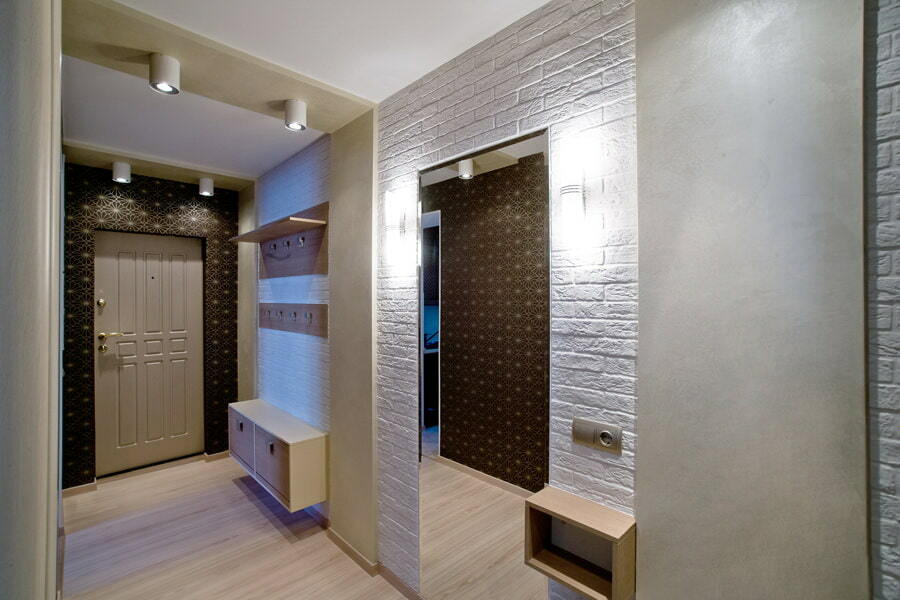
In a spacious hallway, it is necessary to provide for several light scenarios with bulbs of different wattage.
Types of wall lamps
Even with all the variety of modern wall lamps, it is traditionally accepted by specialists and interior designers to divide them into two large groups - with the use of shades and sconces. Their fundamental difference lies in adherence to the wall surface. If lamps using shades are most often static and motionless, then the sconce is distinguished by the ability to rotate and deviate from the axis, which allows you to direct the lighting to a specific area.
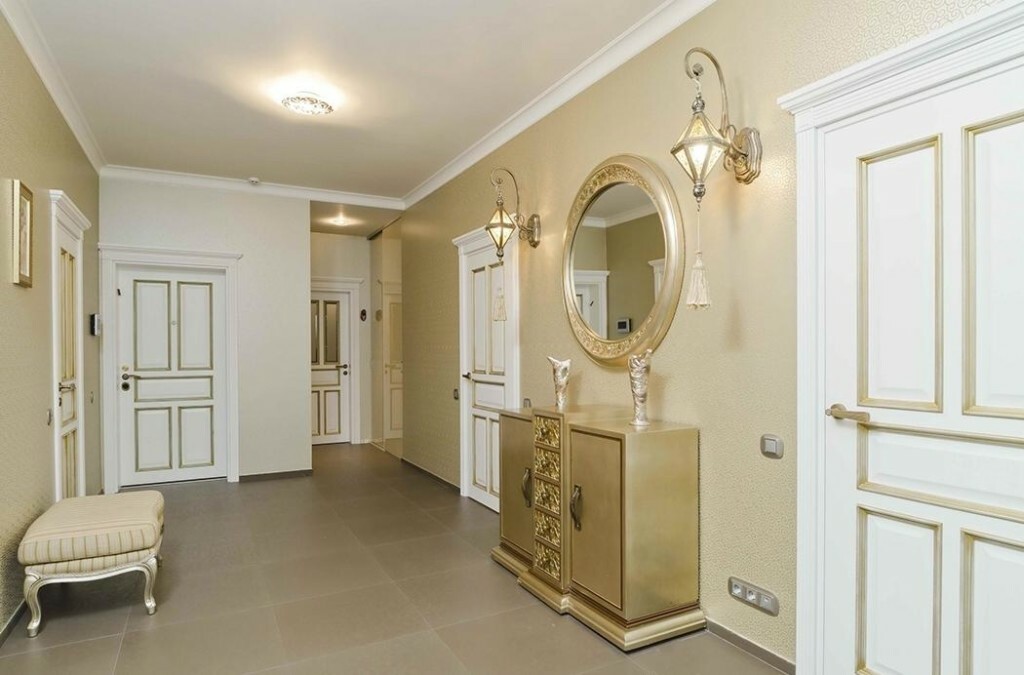
The choice of lighting fixtures depends on the style solution of the hallway interior
Also, spots, wall spotlights and LED strips have become very popular in the zoning of the hallway and corridor. It is often permissible to use several types of lamps at once in one room, depending on the style and specific functional load.
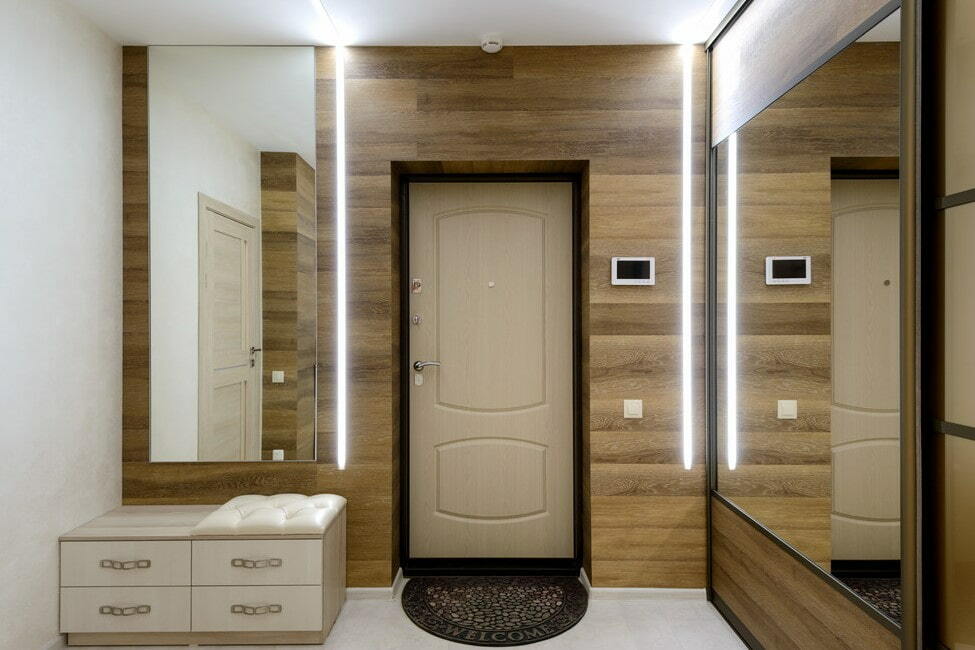
Built-in linear luminaires - one of the most modern hallway lighting options
Lamps with shade
These are sources of artificial light with shades of a wide variety of shapes: round, oval square, rectangular and non-standard abstract. The main distinguishing feature of this type of lamps is that their plafonds fit quite tightly to the wall and diffuse soft, cozy light.
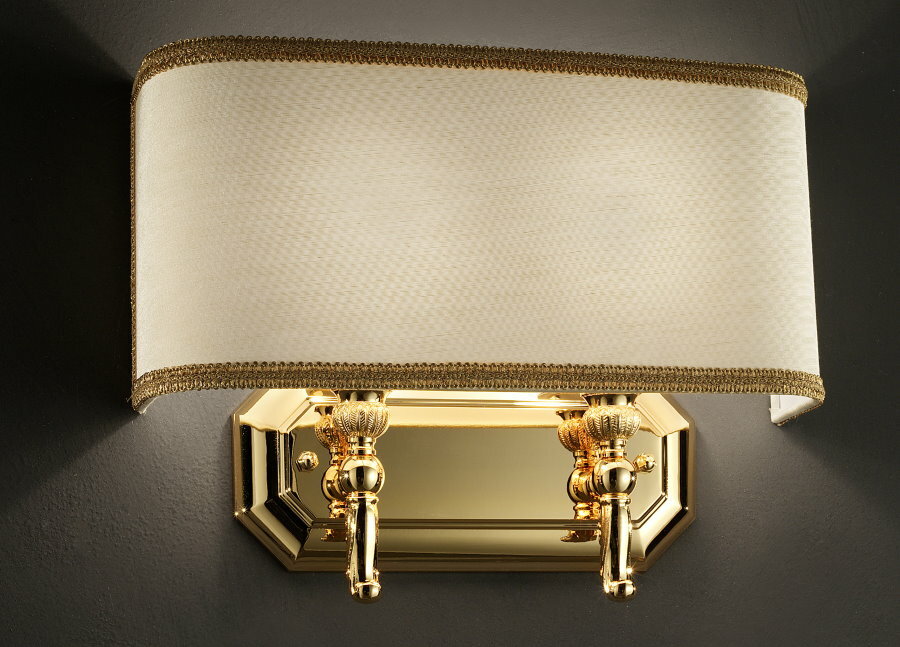
Luminaires with flat shades are ideal for cramped hallways
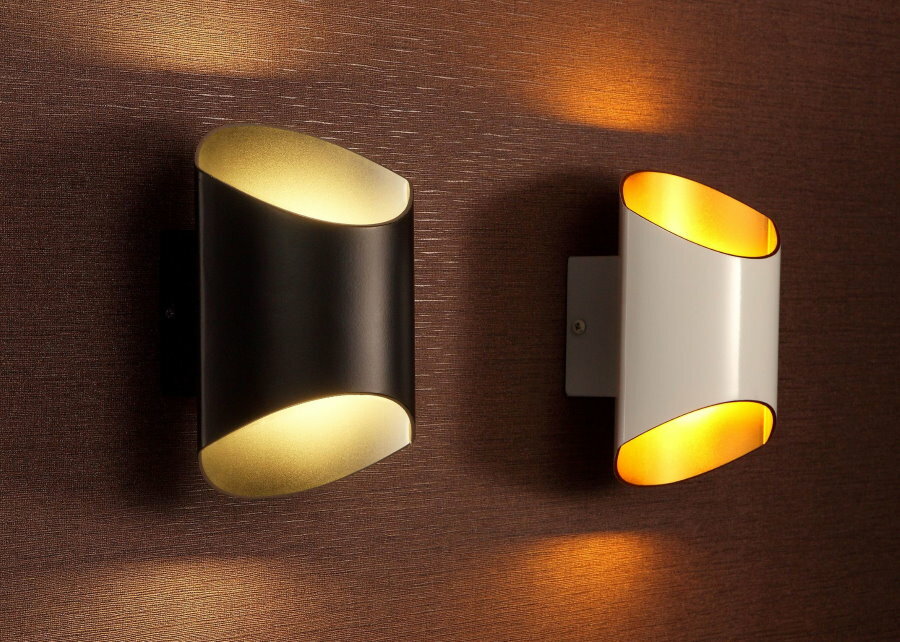
Depending on the version of the plafond, the light beams can be directed downward, upward or in all directions
The lampshades have a minimalistic, neat look. They are easy to care for and fairly easy to clean. The most popular are classic models (plates of matte white or milky colors), with a floristic orientation (made in the form flowers, buds, leaves) and original, non-standard plafonds of the most unusual shapes, colors and sizes (used in hallways made in Art Nouveau and "high tech".
Sconce
Sconces in the hallway are attached to the wall using a small, special bracket. A distinctive feature of this type of luminaire is the ability to transform the space with any the height of the walls and act as both central and local lighting for illumination in certain zones.
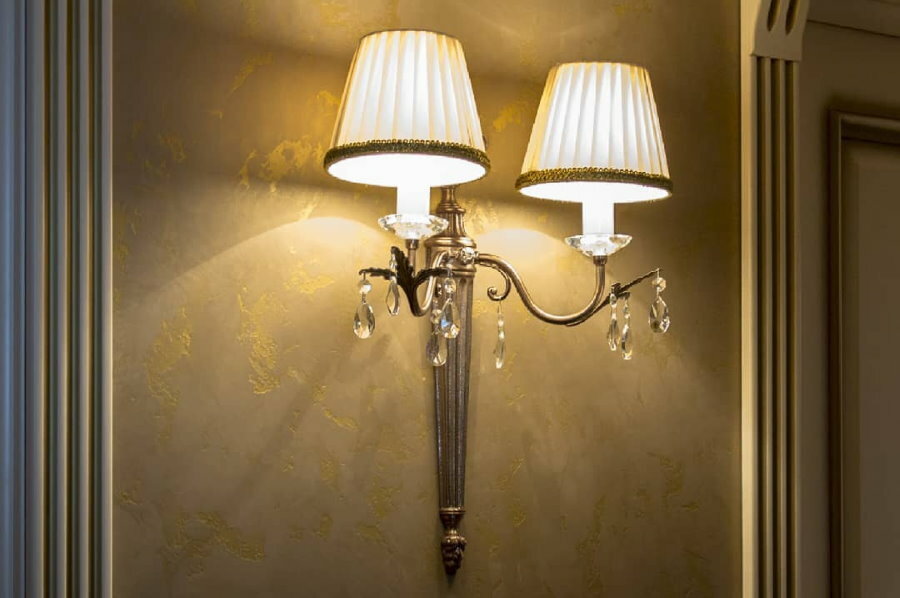
Well-chosen sconces will be an original addition to the design of the hallway.
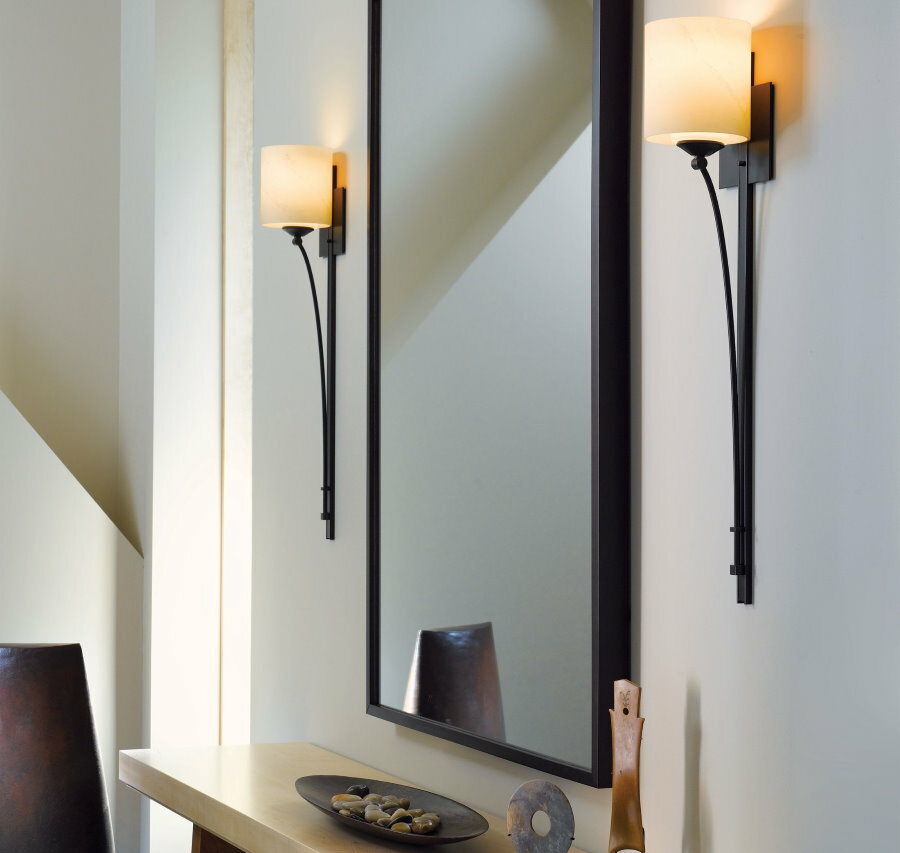
Most often, sconces are hung on the sides of the mirror.
Quite often they are used in pairs, for example, as lighting a mirror in a hallway. The design of the performance can be completely different, the classic models include models made of crystal or glass, to modern ones - models made of plastic, wood, metal and textiles.
With hanging shade
If you want the light from the lamp in the luminaire to break through the shade material and create an additional illusion of expansion of the walls and ceiling covering behind due to the refraction of the rays, you can use models with diffusers made of a wide variety of materials that do not fit snugly against the lamp and wall.
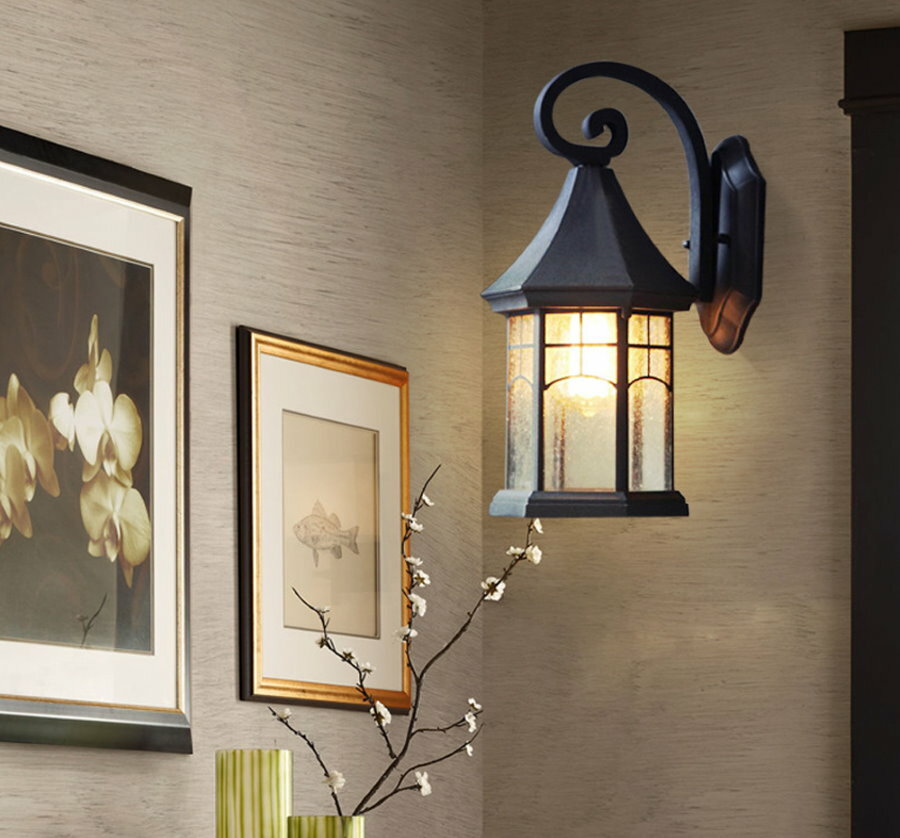
The variety of lamps with pendant shades is very large.
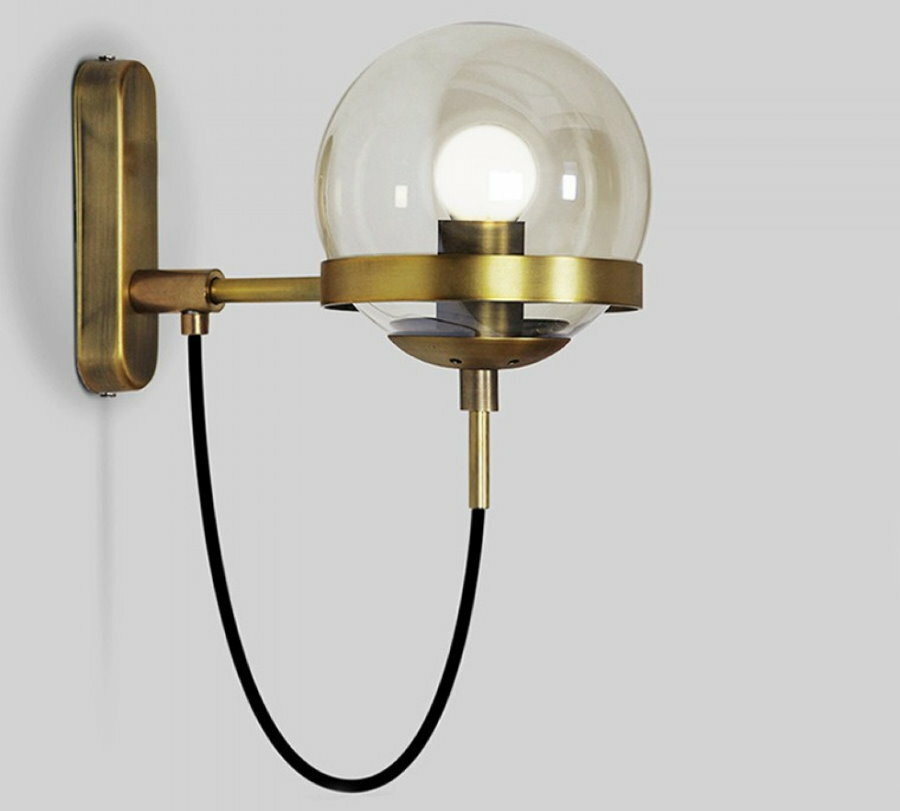
These can be three-dimensional models with several shades, “bare” bulbs on cords, designs on hooks
If the material for making the plafond is dense, then the beam created by the lamp will be clearly delineated and directed, and vice versa, with a transparent material for the manufacture of the plafond, the beam will have a blurry, unclear outlines.
Installation options for wall lights
In any hallway, two zones are especially distinguished: the zone by the mirror, in order to be sure of the impeccability of the appearance in front of access to the street and the area near the wardrobe or hangers, in order to easily find the necessary outerwear or pair shoes.
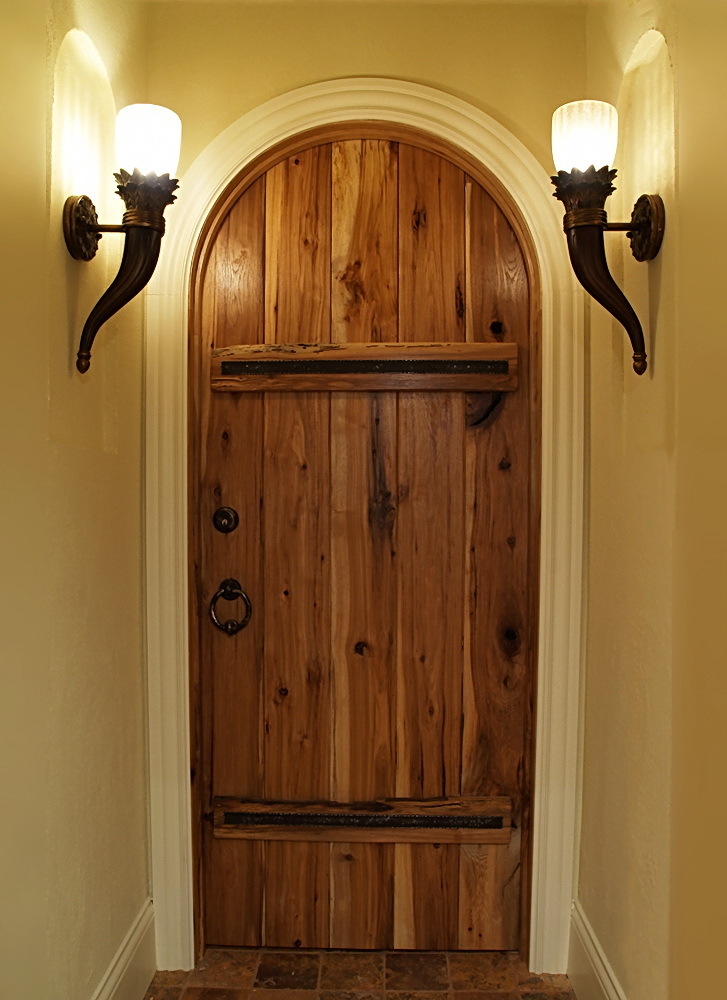
The number and options for the location of the lamps depend on the size and shape of the hallway.
The space around the mirror needs an additional light source. An ideal option for illuminating this area is a sconce above the mirror in the hallway, one or more, mounted on one tripod. Such a sconce is installed along the upper edge of the mirror and the level of its illumination turns out to be quite high. This makes it possible to see a person's face and clothes in the smallest detail, without falling shadows.
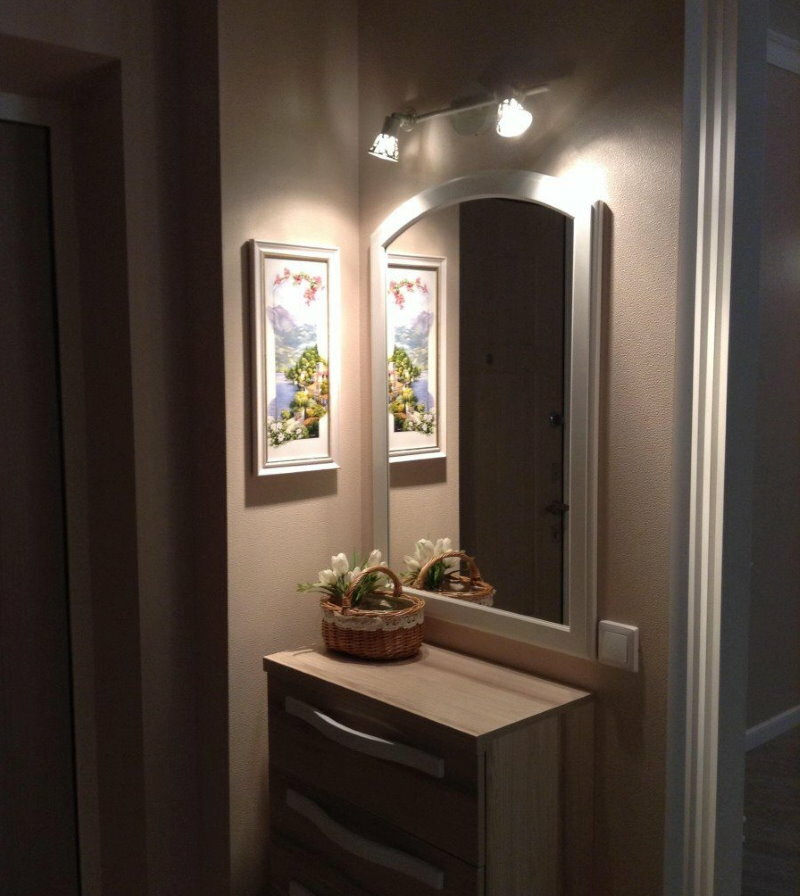
Directional rotary lamps are most often placed above the mirror.
Another classic option for lighting this area is the symmetrical placement of two lamps on both sides of the mirror at eye level.
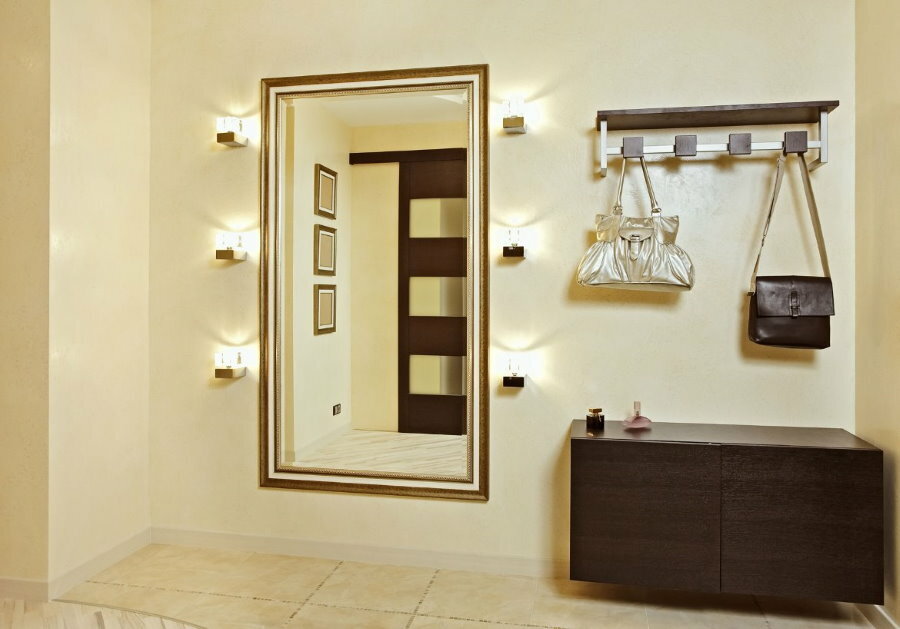
Several compact lamps can also be used to illuminate the mirror.
Also, models of mirrors and wardrobes with lamps built around the perimeter or upper edge are very popular now. Such an arrangement of light sources directly on the mirror surface also prevents the ambient light from "blinding the eyes" and from falling shadows on the image.
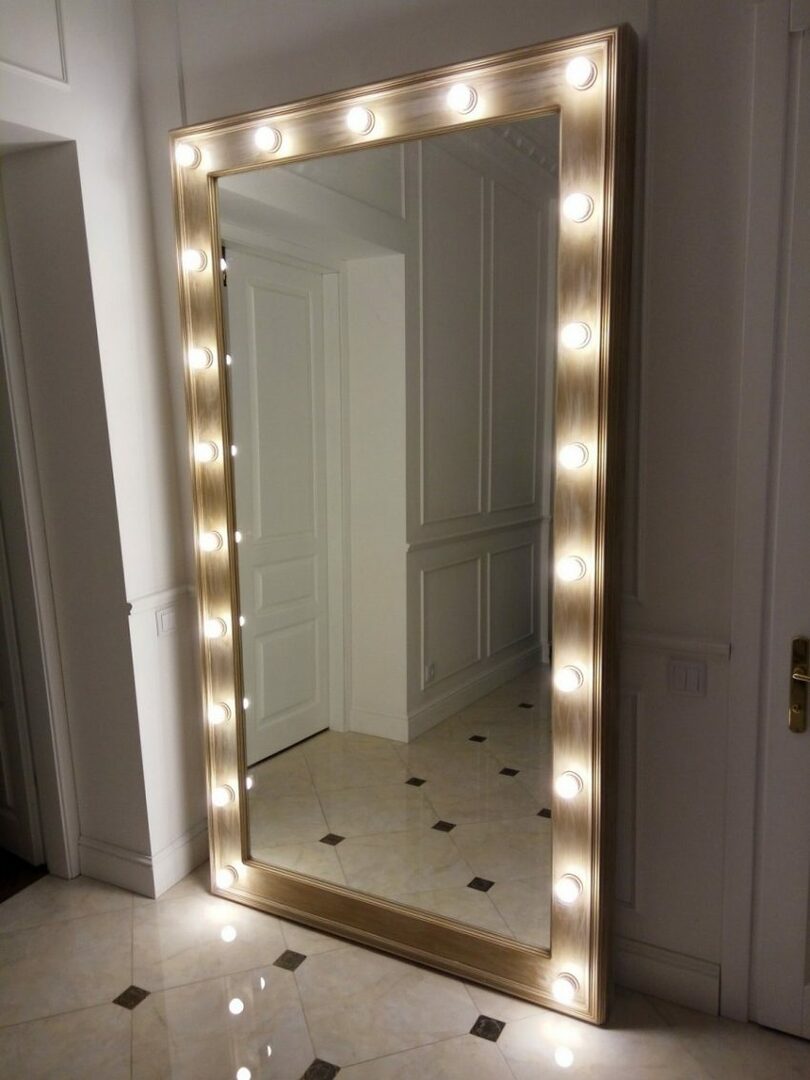
Floor mirror with built-in illumination - one of the most fashionable solutions for the interior of the hallway
Choosing a lamp for the style of the room
It is important to remember that the correct placement of wall lamps in the corridor and hallway should be in harmony with the overall style of the room. Below we will analyze the features inherent in lighting fixtures of the styles most often used in the decoration of apartments and houses:
- Minimalistic and correct "high-tech", which is based on strict, geometric lines, involves the use of ceiling and wall spotlights of round and square shape with fluorescent glow of lamps, which is the hallmark of this style.
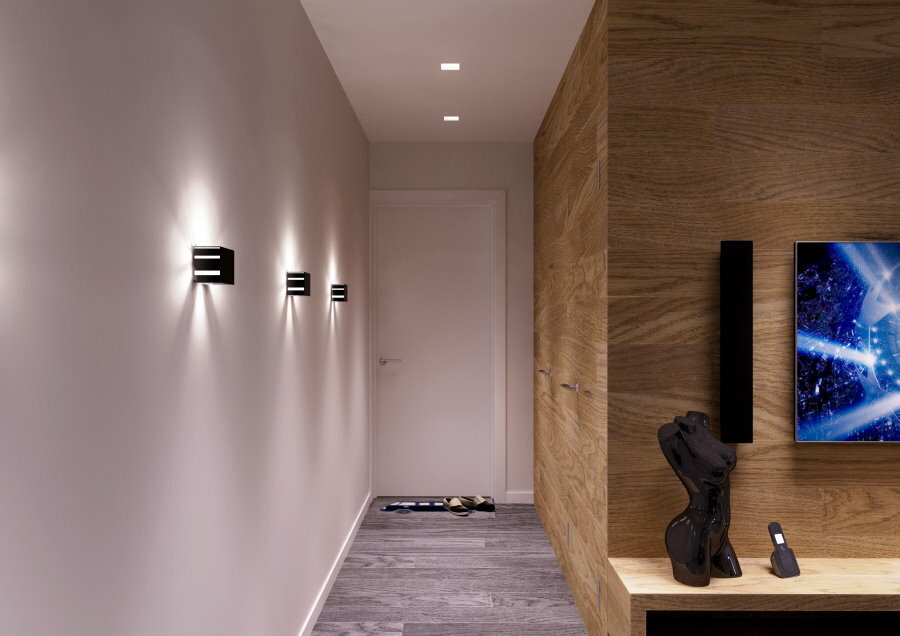
Modern luminaires are characterized by a simple shape and small size.
- The walls under the "brickwork", characteristic of the loft style, are decorated with lamps in the form of lanterns of bronze and brown colors, as under the street balconies.
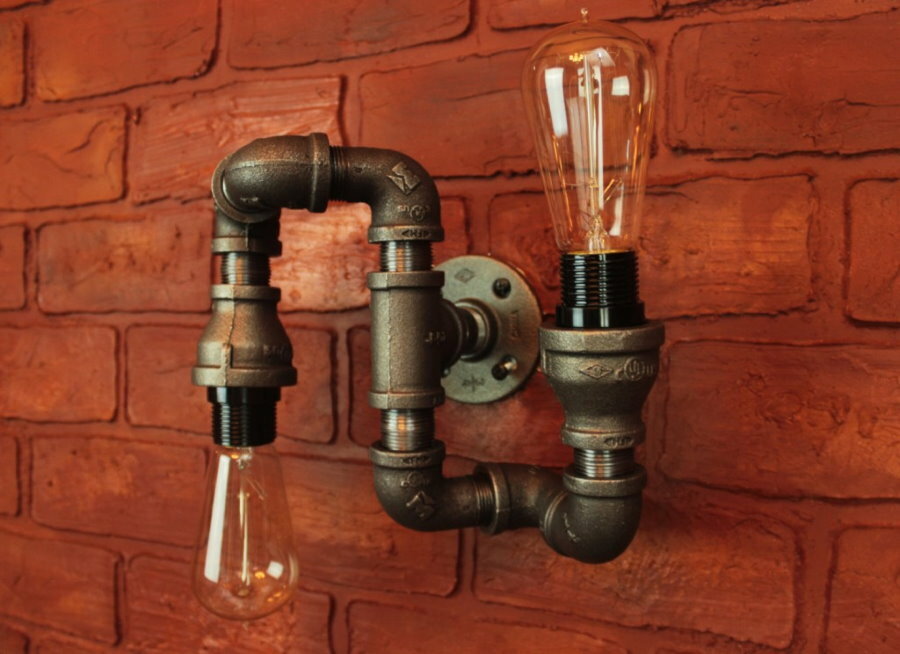
A loft-style lamp can be made with your own hands from water pipes
- Wall-mounted light sources with intertwined, openwork frames in white, with a transparent or light shade - a characteristic feature of a Provence-style hallway.
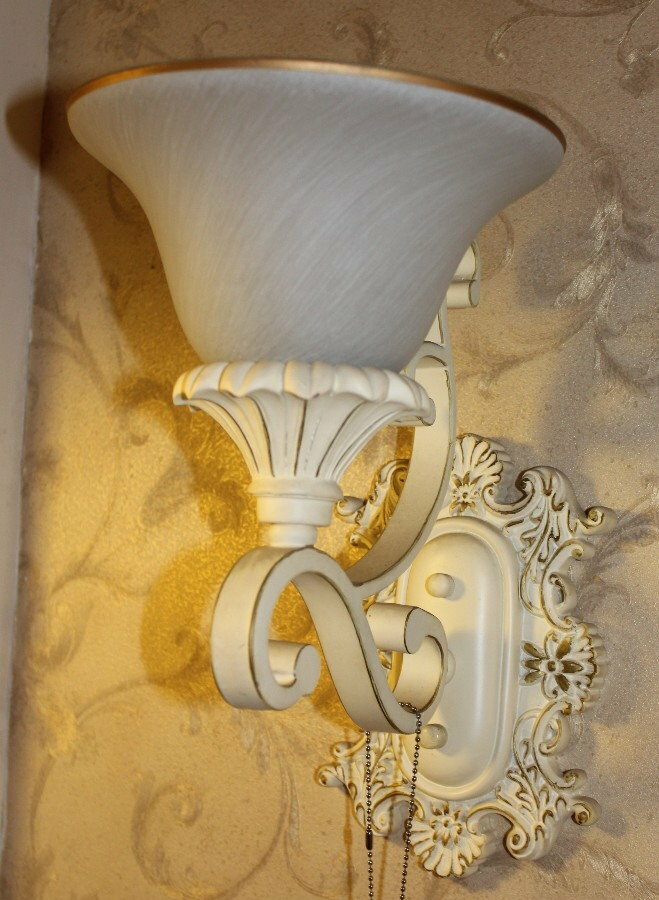
The lamp rod in the Provence style should be curly, with interesting details of floral or plant motifs
- Eco-style dictates the presence of natural materials in the frames and shades of lamps.
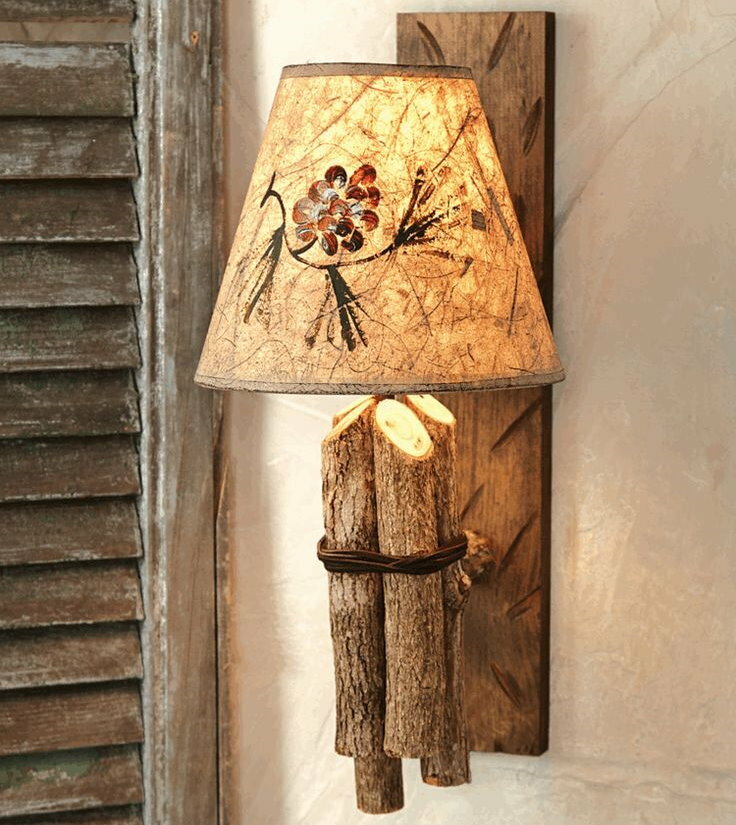
Eco-style luminaire bodies are made from wood parts, lampshades from textiles or rice paper
- Chandelier lamps and candlesticks with gold and bronze fixtures feature Baroque-style artificial lighting sources.
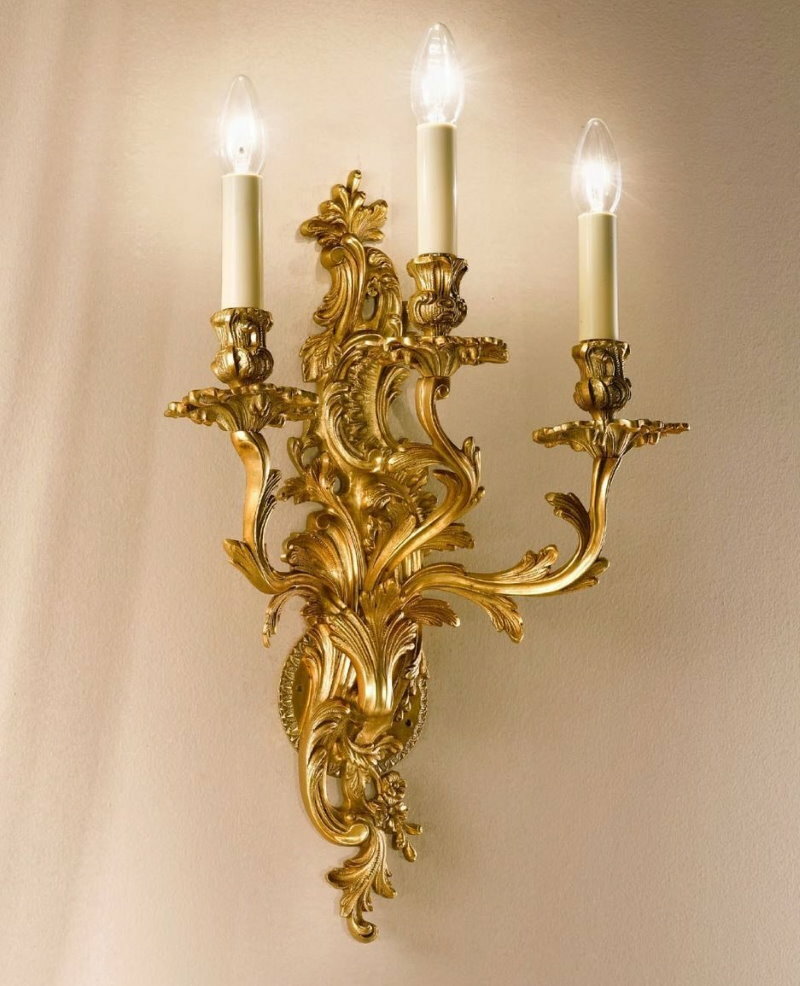
A baroque lamp should decorate the interior of the hallway and attract attention.
Regardless of the interior, it is important to remember that lighting can present your hallway and hallway in a favorable or losing light. In order to make this room a truly light, cozy and spacious place, do not forget about all the features and the rules for choosing wall lamps and try to make the most of their beauty, original design and functionality.



